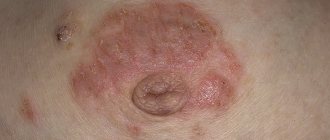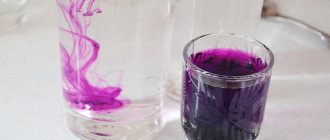The mechanical seal has several main sealing points:
- The seal between the fixed and moving parts of the seal (points 3 and 1);
The seal between the stationary part and the oil seal surface (points 1 and 2);
The basis of the mechanical seal design is the contacting surfaces of the moving and stationary parts. They must be completely flat and are made of very hard materials. For example, silicon carbide or tungsten carbide. It is worth noting that the correct alignment between the pump shaft and the electric motor (or gear motor) plays a big role in the “long life” of the mechanical shaft seal. If the alignment is not accurate, then even a very high-quality seal will quickly fail. This is especially critical if the pump shaft rotates at high speed. Between the rotating and stationary surfaces of the mechanical seal there is a so-called “liquid film”; if the parts of the seals were in dry contact with each other, they would burn out very quickly as a result of strong friction. The liquid film is provided by the product itself. Now we come to the main part of the article - this is the choice of the type of mechanical shaft seal depending on the pumped liquid.
Single mechanical shaft seal
The simplest type of mechanical shaft seal (single mechanical seal) was discussed above. When pumping what liquids is it applicable and when is its choice optimal? First of all, these are those liquids that are not subject to crystallization. For example, when pumping liquids containing sugar. When the pump stops, a “glassy surface” is formed, which prevents the pumped liquid from flowing between the rotating and stationary seal surfaces. As a result, a “liquid film” does not form, the seal works “dry” and quickly fails. A single mechanical seal is perfect for pumps that pump light petroleum products (if permitted by plant regulations), various non-crystallizing food liquids, creams, cosmetics, etc. Also, a single mechanical seal can be used when pumping bitumen, fuel oil, oil and a wide range of other liquids. It is important that 2 main conditions are met - the physical compatibility of the mechanical seal with the pumped liquid (chemical composition, pumping temperature, etc.) and that the liquid is not subject to crystallization. It is worth noting that in many cases the possibility of operating a single mechanical seal can only be determined experimentally. For example, we noticed this feature: when pumping one type of toothpaste at the same plant, a single mechanical seal works perfectly without replacement for more than 3 years, but on another type of toothpaste it did not last even three months, although at first glance the consistency and composition The toothpastes were very similar. In this case, it was decided to leave single mechanical seals on one type of toothpaste, and change them to double ones on the other type.
Healing procedures
The choice of treatment program is completely influenced by the cause of the problem.
The main task of combating lactostasis is to free the breasts from milk. A woman needs to massage her breasts, not get too cold, and feed the baby in a timely manner. It is important to eat well and rest; it is preferable to sleep on your side.
Mastitis is treated with antibiotic therapy. A properly selected treatment program can remove the seal.
When a doctor encounters purulent mastitis, surgical intervention is necessary.
For mastopathy, conservative methods are used. Various drugs, such as inhibitors, are used in therapy. Their task is to normalize hormonal levels.
When a doctor encounters a benign lump, a decision is usually made about surgical manipulation. This is more effective than therapeutic methods. Enucleation or sectoral resection is used.
Thrombocytopenia
Oncological tumors are treated only through surgery. Typically, a mastectomy is performed. In the process, regional lymph nodes are removed.
Sometimes the tumor is excised within healthy tissue.
As an alternative to treatment, chemotherapy, radiation therapy, and targeted therapy are used. The effect is enhanced if they complement each other.
Double mechanical seal
In this part of the article, we will consider the types of double mechanical shaft seals and in which case their choice is optimal. Double mechanical seals almost completely eliminate the possibility of product or gas leakage during pump operation. They are used when pumping toxic, poisonous and other hazardous liquids, i.e. where even minimal leakage is unacceptable. In addition, at many oil refineries in Russia there are strict regulations, according to which the use of a double mechanical seal is mandatory even for liquids such as bitumen, fuel oil, tar, oil, etc. The use of a double mechanical seal is justified in the following cases:
- Pumping hazardous liquid;
- Pumping expensive liquids (pharmaceuticals, cosmetics, etc.);
- Pumping liquids prone to crystallization;
- Pumping of gaseous or multiphase liquids.
- In cases where a single mechanical seal fails too quickly (in this case, errors such as incorrect shaft alignment and physical compatibility of the pumped medium (and its technical parameters) and the mechanical seal should be excluded.
A very important advantage of a double mechanical seal over a single one is the presence of a “locking fluid”, i.e. the rubbing surfaces of the seals are isolated from the pumped medium, and the presence of a “liquid film” is ensured by a “locking liquid”. This ensures not only reliable protection against leakage, but also significantly increases the service life of the seal itself. The role of “locking fluid” can be ordinary water, mineral or synthetic based oils and a number of other liquids. There are three basic configurations of double mechanical seals:
- "Back to back";
- "Tandem";
- "Face to face";
Back-to-back double mechanical seal
In this double seal configuration, the two sealing surfaces are mounted back-to-back against each other. The seals are located inside the oil seal. This configuration is popular nowadays. Its advantages:
- Easy alignment of sliding surfaces (which is difficult in the “tandem” type of double seal);
- Not subject to fretting wear;
- Compact size;
- Often offered as a convenient cartridge;
- Back pressure is balanced by double balancing;
- High level of performance (can operate at high shaft speeds), largely due to the cooling effect of the barrier fluid flowing through both internal and external seals;
Flaws:
- Limited seal fluid pressure due to risk of seal failure;
- Cannot cope with back pressure unless double balanced;
- If the seal breaks, the “locking liquid” can enter the pumped product.
Features:
For a back-to-back double mechanical seal to operate properly, a sealing fluid must be pressurized to a higher pressure than the pump chamber. For an unbalanced mechanical seal, the pressure of the “locking fluid” must be 1 bar greater than in the pump chamber. In this case, the "locking fluid" is under pressure higher than the pressure in the pump chamber, so the outer seal faces bear more stress and are more likely to fail first. When this happens, the "locking" pressure will be lost, causing the pumped fluid to leak into the "locking fluid" reservoir. In other words - if the seals are working correctly, both seals will fail at the same time. This is not a very good backup defense.
If this seal is a double balanced design, the fluid between the inner and outer seal surfaces may have a higher (barrier) or lower (buffer) pressure than the pressure in the pump chamber. This means that if seal/buffer fluid is lost, both seals will remain closed and operate reliably.
During normal operation there is no risk of leakage to the atmosphere.
A change in the fluid level in the "barrier fluid" tank indicates the condition of the seal.
If the pumped liquid is “hazardous”, a liquid level sensor must be installed.
If the internal seal fails first, “locking fluid” will leak into the pump chamber and thus into the product being pumped. Therefore, the “barrier liquid” should be selected in such a way that it is not too critical for the product being pumped.
Breast self-examination
Self-examination should be carried out regularly, at least once a month. It is better to do this at the same time during the menstrual cycle.
Self-examination should be divided into 2 stages:
- Inspection;
- Palpation.
Initially, it is necessary to examine the skin for changes in color, rashes, or “lemon peel” changes. During self-examination, it is important to pay attention to whether the mammary glands are symmetrical. If there are no differences or they are small, this is the norm. If significant asymmetry occurs suddenly, you should visit a doctor.
In addition to examining the breasts, you need to make sure there are no retractions. To do this you need to raise your hands up. If retractions are present, then we can speak of suspicion of cancer.
After inspection, palpation follows. To carry it out, we raise our hand behind our head. And we conduct an examination around the chest (fingers flat). The goal is to study the entire mammary gland.
Of course, nipple discharge cannot be ignored. They can appear if you press on the nipple, plus you should pay attention to stains on clothes caused by discharge.
Double tandem mechanical seal
This configuration is where two sets of mechanical seals are oriented the same and installed in series. This configuration is often called "face-to-back". It is often used in double seals.
Advantages:
- Possibility of high pressure “locking fluid”;
- A second seal provides backup protection - the best choice for sealing toxic or hazardous liquids/gases;
- Ability to work with abrasive liquids;
- Very popular in the oil refining industry.
Flaws:
- Longer axial length than back-to-back compaction devices (this can be a problem when space is limited);
- Complex, expensive design.
Features:
Tandem seals increase the reliability of the system; if the internal seal fails, the external one will replace it. The locking fluid pressure can be significantly higher than in a back-to-back configuration because the pressure acts to compress the outer sealing surfaces, which can withstand high loads.
Features of the Lakhta Milon laser
Modern science has long appreciated all the advantages of using lasers in medicine. Therefore, today new, more advanced devices are constantly appearing, one of which is the domestically produced Lakhta Milon device.
With its help, you can perform minimally invasive operations in the shortest possible time, differing in:
- high degree of security,
- efficiency,
- speed,
- short recovery period,
- no need for general anesthesia.
Double face-to-face mechanical seal
This seal configuration can be used when equipment has limited space to accommodate back-to-back or tandem seals. In this configuration, part of the seal is installed in the pump chamber and the rest is installed outside the chamber.
Advantages:
- Simple design;
- Small axial length;
- Easily handles solid and contaminated environments;
- Quite common due to ease of manufacture and low cost.
Flaws:
- There is no backup seal provided, as in tandem;
- The seals use a common stationary component. Reliability decreases because if a stationary component breaks, both sets of seals fail.
Breast compaction in pregnant and lactating women
A woman cannot avoid hormonal changes during pregnancy. During this period, the mammary glands enlarge under the influence of estrogens, progesterone, prolactin and placental lactogen. The lactogenic effect of prolactin is blocked by increased production of estrogen and progesterone until the time of birth. After childbirth, the levels of these hormones in a woman’s body decrease significantly, and then, under the influence of a high level of prolactin production, lactation and milk production begin.
According to statistics, breast cancer develops in one out of 3000-4000 pregnant women. The course of this cancer is the same as that observed in the absence of pregnancy. Considering that the presence of a large formation or lump in the breast during pregnancy can be mistakenly attributed to ongoing hormonal changes, the tumor is often diagnosed at a later stage.
Therefore, for any large tumor that appears during pregnancy or lactation, it is necessary to undergo a detailed examination. It must include a biopsy performed under local anesthesia.
How to choose the type of pump shaft seal?
Summarizing all of the above, we can conclude that the cheapest and easiest-to-use method of shaft sealing is the stuffing box, but as mentioned above, it has a number of serious disadvantages. We recommend using a stuffing box packing (or its more modern analogue - a lip seal) when pumping “non-hazardous” liquids at pressures up to 3-5 bar.
The single mechanical seal can be used at higher pressures when pumping a wide range of non-crystallizing liquids. It also does not have a very high price. The “liquid film” between the rubbing surfaces is provided by the product itself and in some cases the use of such a seal may be limited.
The double mechanical seal can be used when pumping “dangerous” or expensive liquids, i.e. where leakage is unacceptable. The types of mechanical seal configurations are outlined above. To select a double seal configuration, a more detailed study of the specific task is required.
What to choose? Original or copy?
Perhaps this is the only question to which we will not give a definite answer, that you need to use exclusively the original. More precisely, it is not entirely clear what is meant by “original”. The fact is that the vast majority of pump manufacturers do not produce mechanical seals themselves, but order them from companies such as John Crane, Aesseal, Burgmann, etc. If you know exactly the factory marking of the mechanical seal, then perhaps it makes economic sense to purchase it directly from the manufacturer of the seal itself. It is worth noting that very often the article number of the mechanical seal is sold under its own brand. In general, if you need to select/replace a mechanical seal on a pump, contact our company. We will try to help you!
Problem during pregnancy and breastfeeding
Pregnancy and the period of breastfeeding are characterized by changes in hormonal levels in the female body. This can lead to the development of various pathologies. Here are the main ones:
- Lactostasis. Formed due to stagnation of milk in the breast. Characteristic of the period immediately following childbirth. The breast becomes rough, compactions form in the tissues, the chest seems to be bursting from the inside, palpation brings a feeling of pain.
- Mastitis. The nature of the pathology is infectious. In the vast majority of cases, it develops during breastfeeding. One of the causes of the pathology is insufficient hygiene of the mammary glands. If pathology occurs, an increase in breast size, swelling, redness is noted, and upon palpation - a sharp pain syndrome. A feverish state and signs of intoxication may occur. As the inflammatory process develops, it produces compactions. Pathology can develop into an abscess or phlegmon.
It is not possible to understand what caused the lumps and pain on your own; a visit to the doctor and the necessary examination are necessary. And, of course, it is necessary to constantly monitor the condition of the mammary glands.










